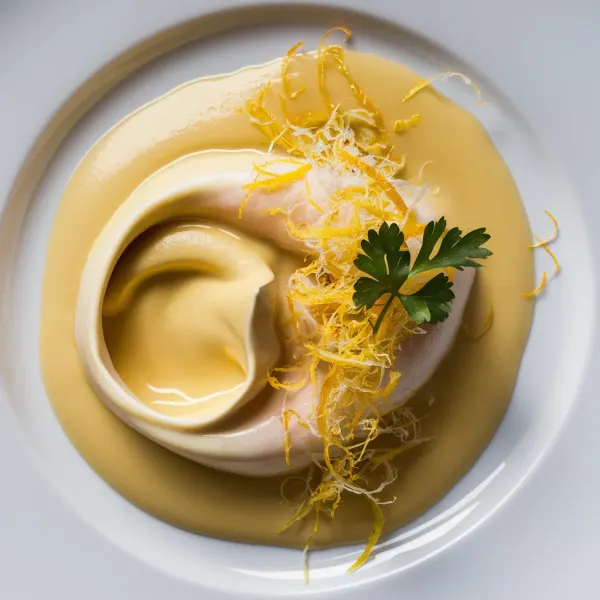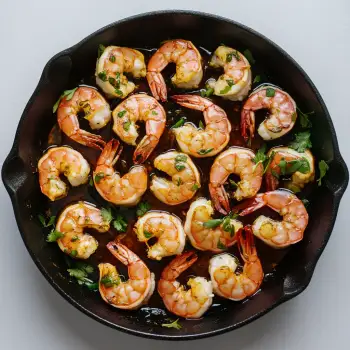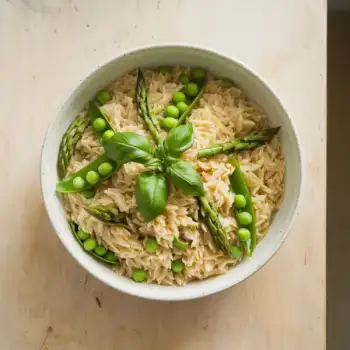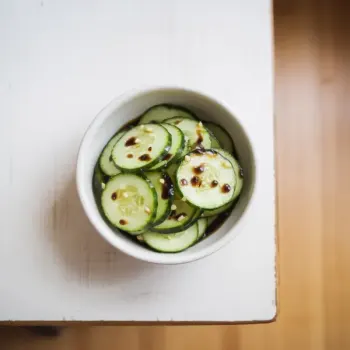
 10 minutes
10 minutesA tangy and creamy hollandaise sauce with a refreshing hint of lemon zest.


Unsalted Butter, melted
0 oz
each
Lemon Juice, squeezed
tablespoons
tablespoons
teaspoons
Lemon Zest, finely grated
teaspoons
1. Melt Butter
Start by melting the unsalted butter in a small saucepan over medium heat. As the butter melts, you'll notice the milky solids settling at the bottom while the clear butterfat floats to the top. Keep the butter warm, but be careful not to burn it.
2. Prepare Water Bath
Next, prepare a water bath. Fill a medium saucepan with 1-2 inches of water and bring it to a simmer. Place a medium stainless-steel bowl over the saucepan, ensuring the bottom of the bowl doesn't touch the water. This gentle heat will help stabilize the egg yolk mixture.
3. Whisk Egg Yolks
In the bowl, combine the two egg yolks, one tablespoon of fresh lemon juice, one tablespoon of water, and a quarter teaspoon of kosher salt. Whisk the mixture continuously for about 3 to 4 minutes, until it thickens and becomes frothy. The gentle heat from the water bath will ensure the yolks thicken without scrambling.
4. Remove from Heat
Once the yolks are thick and frothy, remove the bowl from the heat and continue whisking for another 30 seconds to cool it slightly. This helps stabilize the sauce before the butter is added.
5. Add Butter
Now, slowly drizzle the warm melted butter into the yolk mixture while whisking constantly. Be sure to leave the milky solids behind, as you only want the clear butterfat. Adding the butter slowly is crucial for creating a creamy, emulsified sauce. If you add the butter too quickly, the sauce could break or become curdled.
6. Add Lemon Zest and Seasoning
Finally, stir in the finely grated lemon zest and adjust the seasoning with additional salt and lemon juice to taste. Your zesty citrus hollandaise sauce is now ready to serve. It's best enjoyed fresh, but you can keep it warm over low heat in a double boiler or a thermos for up to one hour.
This is a classic variation of hollandaise that includes shallots, tarragon, and chervil, along with a reduction of vinegar. It’s traditionally served with steak but also complements roasted chicken or fish.
By incorporating different citrus juices such as orange, lime, or grapefruit in place of lemon, you can create a range of hollandaise sauces with varying levels of sweetness and tang. This variation pairs wonderfully with seafood, such as salmon or crab cakes, and can also elevate vegetables like asparagus or artichokes.
Infused with blood orange juice and zest, Maltaise sauce brings a beautiful color and a slightly sweeter citrus profile, making it perfect for enhancing simple fish dishes or Eggs Benedict.
For a seasonal twist, use blood orange juice in place of the regular citrus. This will give the sauce a stunning color and a slightly more berry-like, tart flavor profile.
A pinch of saffron threads steeped in the sauce will lend an exotic aroma and a subtle earthiness, along with a gorgeous golden hue. It's a luxurious variation that elevates the dish.




Comments (0)